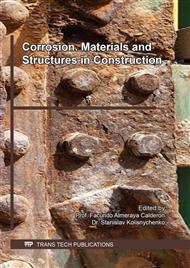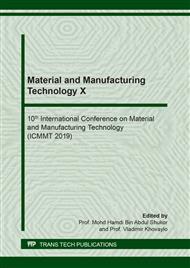p.194
p.199
p.204
p.209
p.214
p.223
p.228
p.233
p.238
Preliminary Study of Corrosion Behavior on Carbon Steel Rebar in Mortar Mixed with Tin Slag as Partial Substitute Cementious Material under 3.5% NaCl Environment Using Electrochemical
Abstract:
Tin slag is one of smelting waste that has not been utilized yet. As substitutional, cementious material in concrete replaced the function due to its similar oxide existence with Ordinary Portland Cement (OPC) such as SiO2, CaO, Al2O3, and Fe2O3. The objective of this research is to evaluate the corrosion behavior on the surface of carbon steel rebar due to the effect of partial substitution of tin slag in mortar. In this research, final tin slag added with ratio of 0.1, 0.2, 0.3 from total cement. The concrete had been cured for 28 days of immersed in NaCl 3.5% solution for 6 days. The corrosion behavior against steel reinforcement inside concrete measured by Electrochemical Impedance Spectroscopy (EIS) method and the result shows that 20% tin slag from the total of cement give the most competitive corrosion resistance than the others.
Info:
Periodical:
Pages:
233-237
Citation:
Online since:
March 2020
Authors:
Price:
Сopyright:
© 2020 Trans Tech Publications Ltd. All Rights Reserved
Share:
Citation:



